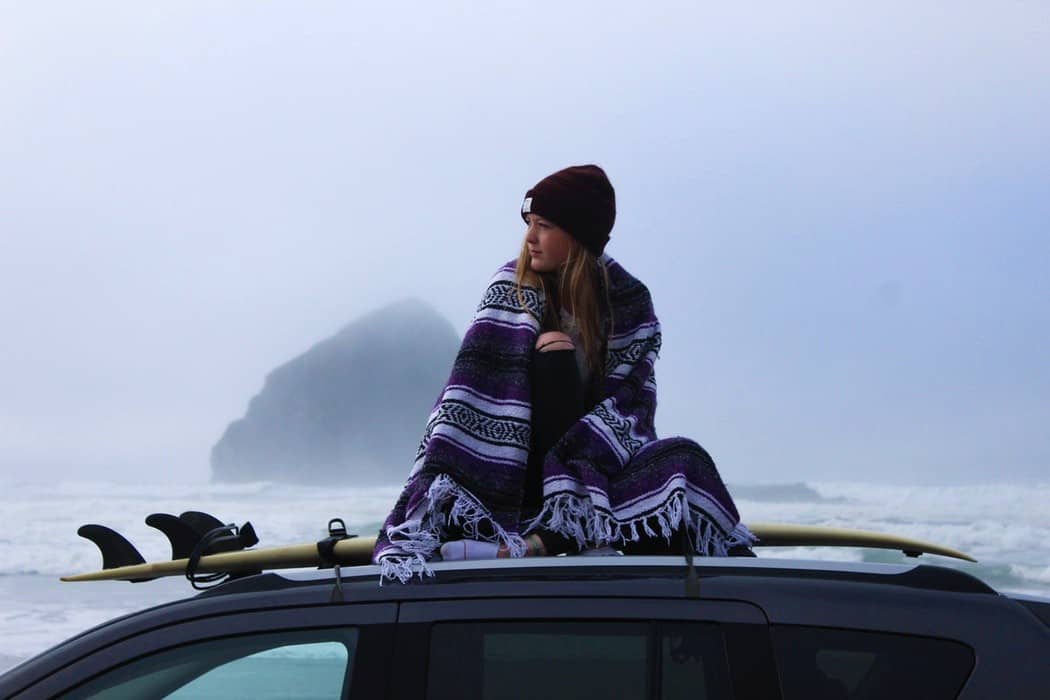
Safe Winter Paddle Boarding Tips
Winter paddle boarding is a real treat. On calm flat days you see a beautiful part of nature few people ever do. My most tranquil paddling has been done in the winter months after the crowds are long gone. And I am happy to say I was toasty warm every minute.
Why I am stoked about winter paddle boarding
- The crowds are gone.
- The scenery is breathtakingly beautiful.
- Paddling becomes a real adventure.
- You are one of the few brave hardy souls who venture out. You get to experience what few do, an intimate encounter with raw nature.
Cold Water Paddle Boarding Safety Guide
- Dress for the swim
- Plan your route
- Know the weather forecast
- Leave a float plan
- Fuel your body
- Plan your exit completely
- Wear a board leash and PFD
- Bring a cell phone
- Paddle close to shore
- Watch the wind
- Stay hydrated
- When in doubt, don’t go out
1. Dress for the Swim
When paddling in cold water it is critical to dress for immersion. The dangers of hypothermia are very real and the cold water does not care how advanced of a paddler you are. I rarely fall when flat water paddling but always dress as if I will be taking a few spills.
Read: Wetsuit Buyers Guide
2. Plan Your Route
You need to take extra precautions when paddling in cold water where a mistake could be fatal. That requires more preparation and planing than warm weather paddling. These steps are critical. Paddling cold water is a serious endeavor and we don’t want to take any unnecessary risk.
Winter is not the time of year to jump on your board and just randomly paddle around. You should know exactly where are you are paddling and for how long. What are good exit point in case of emergency? Where can I paddle to get out of the wind? Are there any potential dangers on this route?
3. Know the Weather Forecast
It’s very important to check the weather and wind forecast before you head out.
WindFinder.com
NOAA Weather
4. Leave a Float Plan
Always leave a float plan with someone when paddling in cold water. Let them know where you are going, how long it should take and tell them you will call or text them when you get in safely. This is even more important when solo paddling.
5. Fuel Your Body
You need extra fuel. Eat 1-2 hours before you go out. My favorite pre-surf meal is either chicken with a sweet potato and olive oil or eggs with oatmeal. Some swear by nuts, an avocado, bananas and dried fruit. Be sure to have a good balance of protein, carbs and fat.
6. Plan Your Exit Completely
When your paddle session is over you may be cold and tired. But you still need to get to your vehicle and deflate your inflatable or secure your hard paddle board to your car. You also need to change out of any wet clothes and stay warm. If you are not prepared enough to do all this in a quick and efficient manner hypothermia could set in.
Here are a few tips for an efficient exit
- Move quickly. Don’t dilly dally. Get your gear packed away and get warm as quick as possible
- Know exactly how you are going to get into dry clothes.
- Before your paddle wrap your post-session clothing around a hot water bottle, wrap a blanket around that. Enjoy warm clothes after you session. Thank me now.
- Cover your car seat with a waterproof fleece-lined blanket. Every paddle should have one of these blankets.
- Bring a plastic storage tub to store your wet wetsuit in your car.
- Bring a large thermos of hot cocoa or better yet some chicken and rice soup.

7. Always Wear a Board Leash and PFD
A board leash and PFD are mandatory and could save your life. Even more important in cold water.
Read: PFD Recommendations
8. Bring a Cell Phone
Use a waterproof drybag for your cell phone. Good for taking pictures but could save your life in an emergency.
Read: How to take your phone paddle boarding
9. Paddle Close to Shore
A good rule for cold water paddle boarding is to never go out farther from shore than you can swim. And remember it is harder to swim in a thick wetsuit and much harder in a drysuit.
10. Watch the Wind
Wind chill is what will get you really cold, really fast. If you’re paddling make sure the wind don’t take you out too far. Watching the wind is always important when paddle boarding. Be extra careful when winter paddling. If it’s really windy don’t go out.
Read: Strong Wind SUP Tips
Read: Paddle Boarding in Strong Crosswinds
11. Stay Hydrated
Make sure to drink plenty of water. It’s critical to staying warm and avoiding cramps. Add a pinch of Himalayan Pink Salt to your water. It will add electrolytes and help hydrate your body. Or you could even bring some chicken soup.
12. When In Doubt, Don’t Go Out
Cold water paddling is a bit more dangerous, use common sense. When paddling in ice water a small mistake can become a deadly one. Be extra careful. Don’t take chances.

